At first glance, a chatterbait fishing lure appears like a spinnerbait with a bent blade and another missing. Also known as a vibrating jig or bladed jig, the chatterbait can be fished from late winter through the autumn months, with spring being the most productive time of the year. As long as you know how to fish a chatterbait for bass, you can have successful outings whenever you choose to hit the water.
A small square piece of metal with trimmed corners attached to the front of a bass jig give the lure its strong vibration. And that is one of the keys to attracting strikes from lurking bass. The vibrating action puts extra shimmy in the lures skirt. Add a small soft-plastic trailer and the chatterbait has a larger profile.
Back in 2006 the original ChatterBait patented by Z-Man Fishing hit the fishing market and was an instance success. Bass anglers from coast-to-coast wanted to get their hands on this versatile lure. In 2013, the vibrating jig was responsible for several tour wins and top finishes on the FLW and B.A.S.S. tournament trail.
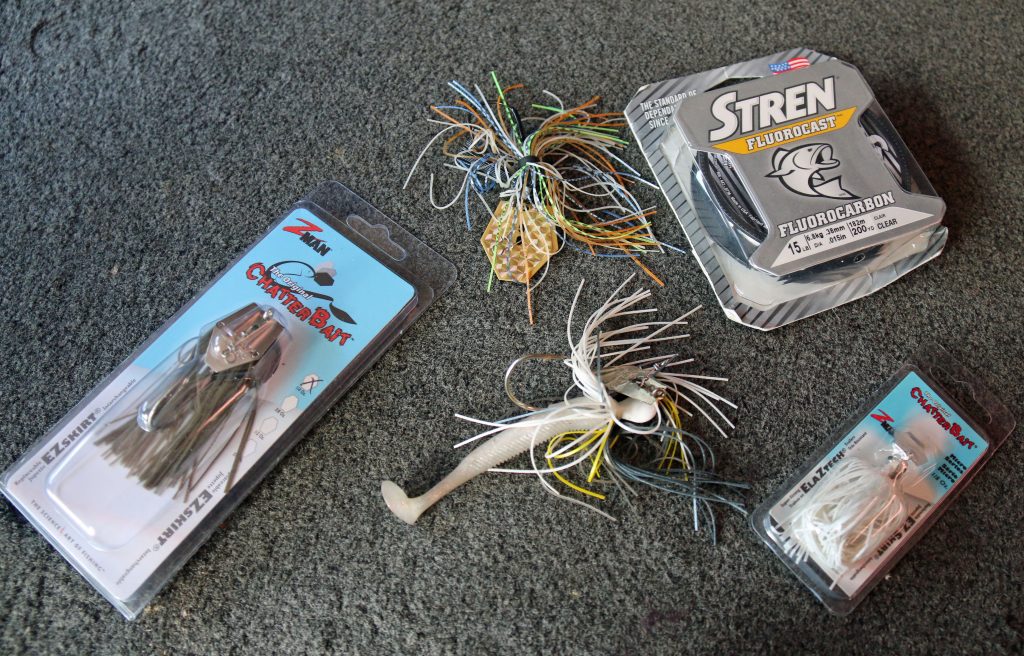
The lure has characteristics of several lures in one. The flash of the blade attracts the bass’ attention like a spinnerbait.
The vibration simulates a large crankbait. The jig and skirt profile mimics different types of baitfish. The chatterbait is a special lure and easy to fish.
Pick A Spot
The vibrating jig can be fished almost anywhere and in any type of cover. This characteristic makes the lure very versatile on any lake. The fiber weed guard helps make the lure virtually weedless. With varying weights, sizes and colors the vibrating jig should be a first choice for spring bass anglers.
“I like to search the outside edge of docks and piers, mentions B.A.S.S. pro angler David Kilgore of Jasper, Ala. “I will change the speed of the lure until I get that first strike.”
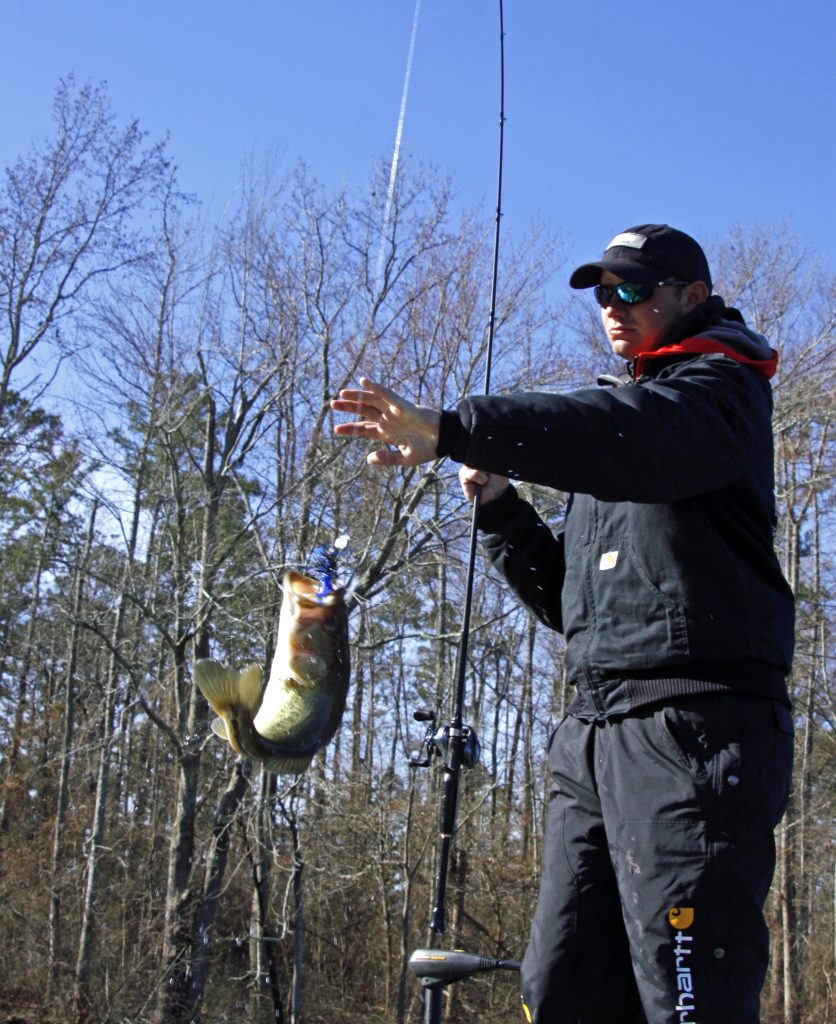
Depending on the lake, the water clarity will dictate what color and size vibrating jig Kilgore will cast. In 2013 at the Bassmaster Southern Open on Logan Martin Lake near Pell City, he favored a 1/2- ounce white Strike King Pure Poison vibrating jig. He won the tournament and secured a berth in the 2014 Bassmaster Classic on Lake Guntersville.
The vibrating jig helped Kilgore catch bass throughout the three-day event even under changing weather and water conditions. On day three, after a night of storms and torrential rain, some areas of the lake were muddy and flooded.
“On the final day, some of the weedbeds I had fished earlier were under water,” explains Kilgore. ‘I went back to the piers and focused on the ones in around 10 to 15 feet of water.”
Weeds and grass beds are another top location to fish the chatterbait. The weedless characteristics of the lure help it slide though emergent and underwater vegetation. A slow, steady retrieve will emulate a baitfish feeding in the weeds.
Anglers should focus casting the vibrating jig along the edges of the weed or grass mats. Small open pockets in the weed patches are other top targets that could hold bass. When fishing shallow water, downsizing to a 1/4- or 3/8- ounce size lure will help anglers with a faster retrieve.
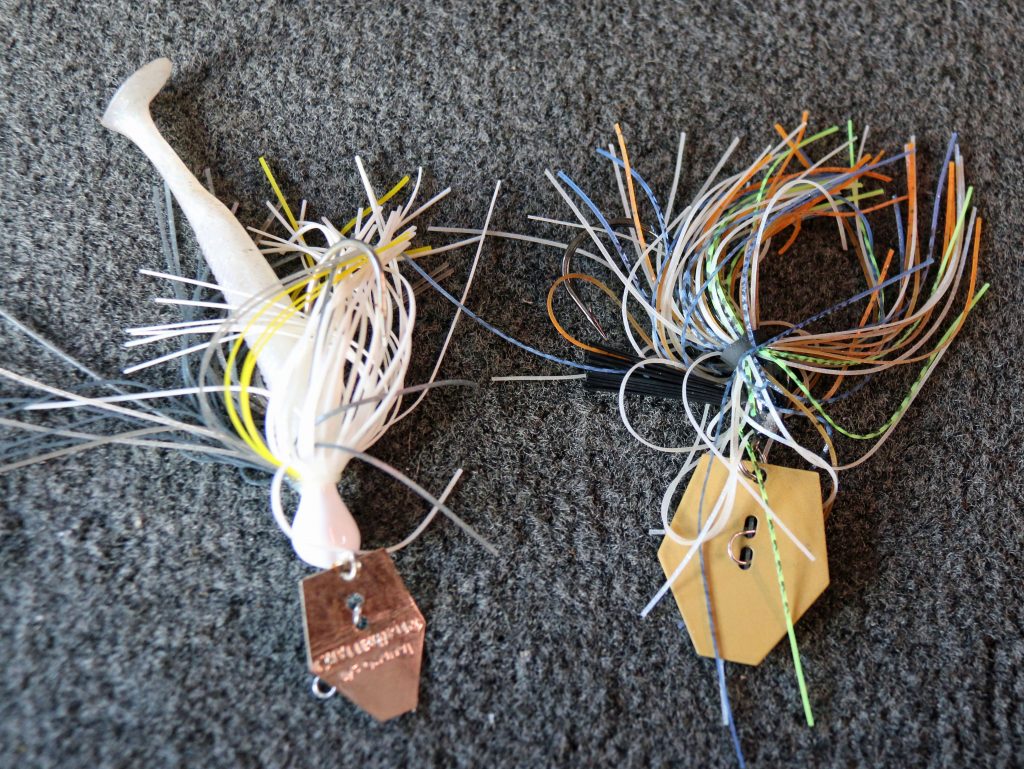
Wood or brush cover should not be overlooked by anglers. Don’t shy away from the thick tangles of brush. The chatterbait is designed to fish heavy cover. Hit the outside edges first and then make some casts to the heart of the cover to entice a waiting bass.
Bass Pro Tour and Major League Fishing pro Aaron Martens of Leeds, Ala., understands the versatility of the vibrating jig. He keeps boxes with different blades, trailers and colors for various fishing conditions. Martens favorite size is a 3/8- ounce Picasso Shock Blade.
“I like to use curly tails as a trailer primarily in the spring months,” Martens explains. “The water color will dictate what color lure and trailer I will use.”
Martens says green pumpkin is a top color for most lakes. When bass are feeding on shad and especially during the shad spawn, he will opt for a silver blade with a white skirt. In muddy water situations dark colors like black/blue or solid black performs well.
Skip Shallow Or Dig It Deep
One advantage of the bladed jig is that it can be skipped under docks, overhanging limbs and brush. The lure is more compact than a standard spinnerbait. This allows the vibrating jig to skip across the water’s surface easier. Bass hiding under docks and brush probably haven’t seen this type of lure.
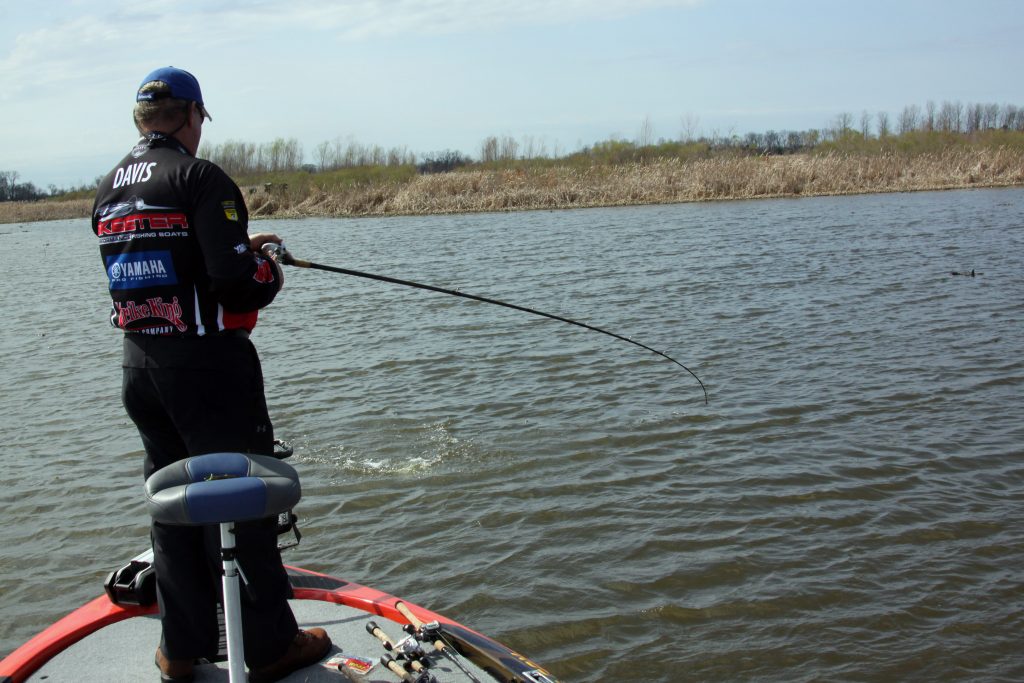
Anglers should avoid bulky, heavy trailers when skipping a vibrating jig. A slender or streamlined trailer will allow the bait to skip further. A bulky or long trailer will catch on the surface pulling energy from the cast slowing the lure too quickly.
Former Bassmaster Classic Champion and Bass pro Tour angler Mark Davis of Mount Ida, Ark certainly knows how to fish a chatterbait for bass. He uses the Rage Blade vibrating jig by Strike King to fish around underwater cover. The lure has a unique design with teardrop shaped blade with a lead weight fixed on one end. The special design helps prevent snagging on wood and rocks.
“The Rage Blade will bounce off cover like a crankbait,” Davis mentions. ‘The streamlined design allows for long casts and can be easily fished deeper.”
Davis feels the vibrating jig has pretty much replaced the old-style spinner bait for many anglers. The chatterbait type lures are more compact and just as weedless. The only drawback of the vibrating jig is that it has less flash than a spinnerbait.
Finding the fish first is the key to catching bass. Davis uses the Pure Poison and Rage Blade to cover lots of water to locate the bass. When fishing the bladed jig, he prefers a little wind and some color to the water.
The retrieve used by Davis is not just a cast and wind. He will cast out the lure, pull it and then let it fall back. It is similar to fishing a regular jig. If the fish are short striking, add a trailer hook like on a spinnerbait to help increase hook-ups.
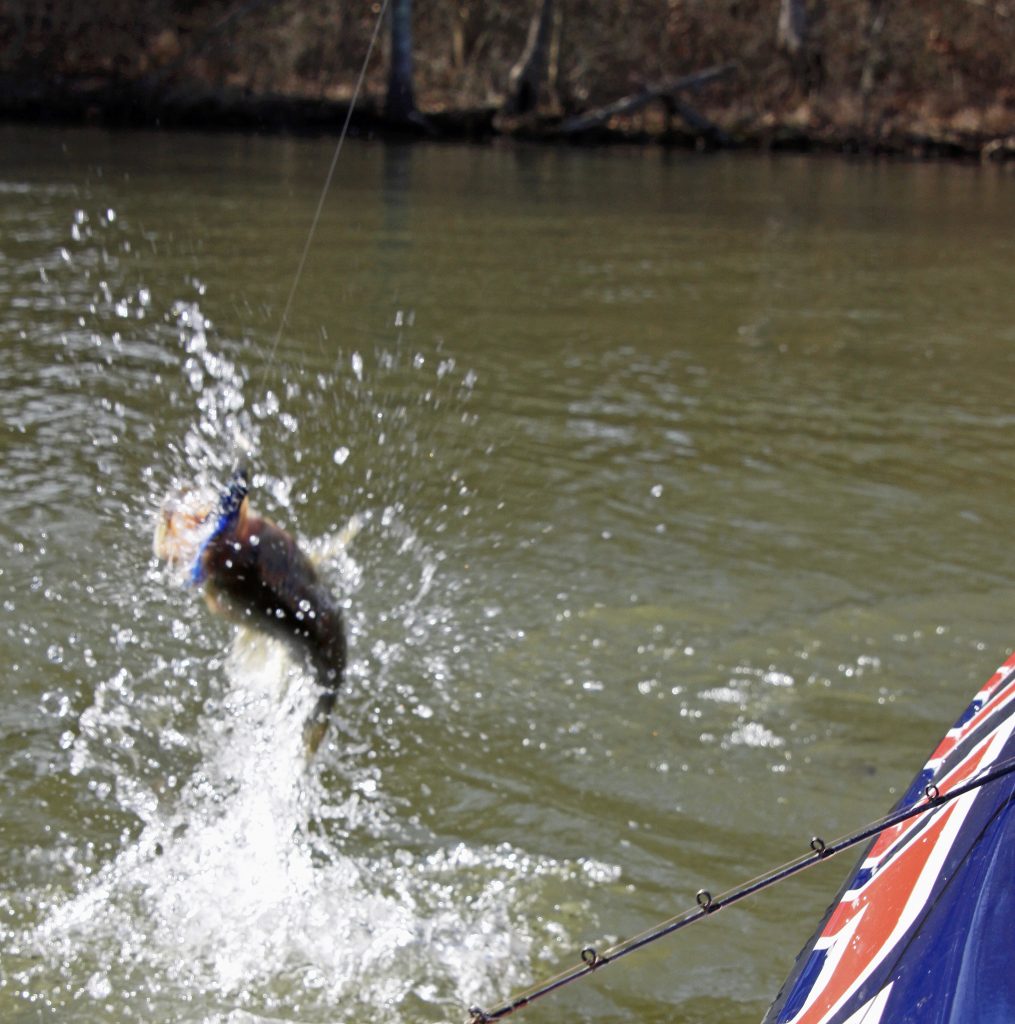
Generally, baitcasting gear is used when fishing chatterbait for bass. Most pro anglers prefer a long rod around 7 feet in a medium to medium-heavy with a parabolic action. This action allows the rod to bend in the middle section and helps increase the odds of hooking the fish.
Line size and type will depend on the cover and fishing conditions. In open water, fluorocarbon line in the 17 to 20 pound-test range works well. In heavy cover like weeds and grass a braided line to around 50 pound-test will assist in pulling big bass form the cover.
On vibrating jigs, the blade is far out front of the hook. Many anglers want to set the hook hard and fast when a strike occurs. However, with chatterbait lures it is better to have a short delay on the hookset to allow the fish to completely take the lure.
Whatever name you prefer, the chatterbait fishing lure is an effective tool for finding and catching bass anytime of the year, but especially in early spring.
Full Disclosure: This post may include affiliate links. There’s no extra charge to our readers for using these.




